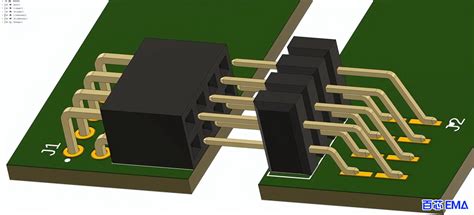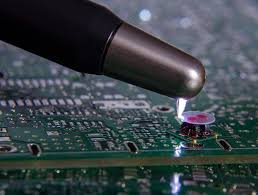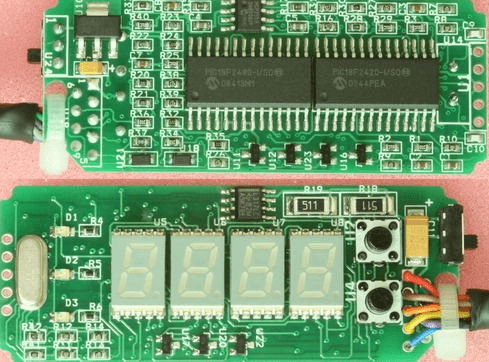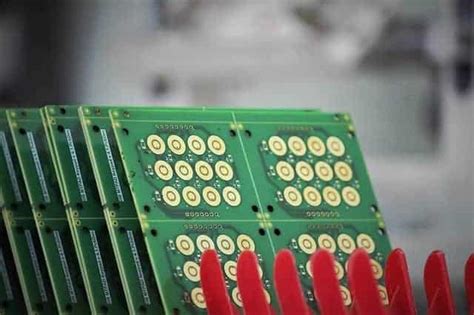What is coverlay in flex pcb
Introduction To Coverlay In Flex PCB
Coverlay is a critical component in the construction and functionality of flexible printed circuit boards (flex PCBs). As the demand for smaller, lighter, and more versatile electronic devices continues to grow, the importance of understanding the various elements that contribute to the performance and reliability of flex PCBs becomes increasingly significant. Coverlay, in particular, plays a vital role in protecting and enhancing the durability of these circuits.
To begin with, coverlay is a protective layer applied to the surface of a flex PCB.
It is typically composed of a polyimide film coated with an adhesive, which is then laminated onto the circuit. This layer serves multiple purposes, primarily acting as a shield against environmental factors such as moisture, dust, and chemicals. By providing this barrier, coverlay helps to prevent corrosion and other forms of damage that could compromise the integrity of the circuit.
Moreover, coverlay contributes to the mechanical stability of flex PCBs.
Flexible circuits are often subjected to bending, twisting, and other forms of mechanical stress during their operation. The coverlay layer helps to distribute these stresses more evenly across the surface of the circuit, thereby reducing the likelihood of cracks or breaks in the conductive traces. This is particularly important in applications where the flex PCB is required to endure repeated flexing or movement, such as in wearable electronics or medical devices.
In addition to its protective and mechanical functions, coverlay also plays a role in the electrical performance of flex PCBs.
By providing a consistent dielectric layer, coverlay helps to maintain the electrical insulation between different conductive traces. This is crucial for preventing short circuits and ensuring the reliable operation of the electronic device. Furthermore, the adhesive used in the coverlay can be tailored to provide specific electrical properties, such as low dielectric constant or high thermal conductivity, depending on the requirements of the application.
The process of applying coverlay to a flex PCB involves several steps.
Initially, the polyimide film is coated with an adhesive and then precisely aligned with the circuit. The assembly is then subjected to heat and pressure to ensure a strong bond between the coverlay and the underlying layers. This lamination process must be carefully controlled to avoid introducing defects such as air bubbles or misalignment, which could affect the performance of the final product.
It is also worth noting that coverlay is not the only option for protecting flex PCBs.
In some cases, a solder mask may be used instead. However, coverlay offers several advantages over solder mask, including better flexibility, higher resistance to environmental factors, and improved mechanical strength. These benefits make coverlay the preferred choice for many applications, particularly those that require high reliability and durability.
In conclusion, coverlay is an essential element in the design and manufacture of flexible printed circuit boards. By providing protection against environmental factors, enhancing mechanical stability, and contributing to electrical performance, coverlay ensures the longevity and reliability of flex PCBs in a wide range of applications. As technology continues to advance and the demand for flexible electronics grows, the role of coverlay in flex PCB construction will remain a critical factor in achieving optimal performance and durability.
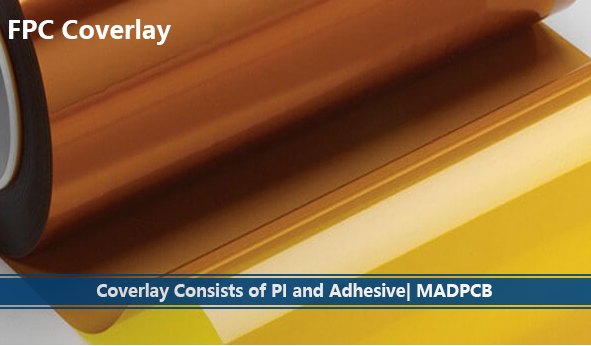
Benefits Of Using Coverlay In Flexible Circuits
Coverlay, a crucial component in flexible printed circuit boards (PCBs), serves as a protective layer that enhances the durability and functionality of these circuits. Flexible PCBs, known for their ability to bend and conform to various shapes, are widely used in numerous applications, from consumer electronics to medical devices. The integration of coverlay into these circuits offers several significant benefits, making it an indispensable element in the design and manufacturing process.
One of the primary advantages of using coverlay in flexible circuits is its ability to provide robust protection against environmental factors.
Flexible PCBs are often exposed to harsh conditions, including moisture, dust, and chemicals. The coverlay acts as a barrier, shielding the delicate circuitry from these potentially damaging elements. This protective layer ensures the longevity and reliability of the flexible PCB, even in challenging environments. Consequently, devices that incorporate flexible circuits with coverlay are more likely to maintain optimal performance over extended periods.
In addition to environmental protection, coverlay also enhances the mechanical strength of flexible circuits.
Flexible PCBs are designed to bend and flex, which can subject them to mechanical stress and strain. The coverlay material, typically made from polyimide or polyester films, adds an extra layer of reinforcement. This reinforcement helps to distribute mechanical stress more evenly across the circuit, reducing the risk of cracks or breaks in the conductive traces. As a result, flexible circuits with coverlay are more resilient and can withstand repeated bending and flexing without compromising their structural integrity.
Furthermore, coverlay contributes to the electrical insulation of flexible circuits.
The conductive traces in a flexible PCB are often closely spaced, which can lead to the risk of short circuits if not properly insulated. The coverlay material provides an effective insulating layer that prevents unintended electrical contact between adjacent traces. This insulation is particularly important in high-density circuit designs, where space constraints necessitate the close placement of conductive elements. By ensuring proper insulation, coverlay helps to maintain the electrical integrity of the flexible circuit, reducing the likelihood of malfunctions or failures.
Another notable benefit of using coverlay in flexible circuits is its role in facilitating the manufacturing process.
The coverlay material can be precisely cut and applied to the flexible PCB, allowing for the creation of complex circuit designs with intricate patterns. This precision is essential for applications that require high levels of accuracy and reliability. Additionally, coverlay can be used to encapsulate specific areas of the circuit, providing targeted protection and insulation where needed. This versatility in application makes coverlay a valuable tool for designers and manufacturers, enabling them to create flexible circuits that meet stringent performance and reliability standards.
Moreover, the use of coverlay in flexible circuits can also contribute to cost savings in the long run.
By enhancing the durability and reliability of the flexible PCB, coverlay reduces the likelihood of failures and the need for repairs or replacements. This reduction in maintenance costs can be particularly beneficial in industries where downtime and equipment failures can have significant financial implications. Therefore, investing in coverlay for flexible circuits can lead to improved overall cost-efficiency and a higher return on investment.
In conclusion, the incorporation of coverlay in flexible printed circuit boards offers a multitude of benefits, including environmental protection, mechanical strength, electrical insulation, manufacturing precision, and cost savings. These advantages make coverlay an essential component in the design and production of flexible circuits, ensuring their performance and reliability in a wide range of applications. As technology continues to advance, the importance of coverlay in flexible PCBs is likely to grow, further solidifying its role in the development of innovative and dependable electronic devices.

Comparison Between Coverlay And Solder Mask In Flex PCB
In the realm of flexible printed circuit boards (flex PCBs), the choice of materials and protective layers is crucial for ensuring optimal performance and durability. Two commonly used protective layers in flex PCBs are coverlay and solder mask. While both serve to protect the circuitry, they differ significantly in their composition, application, and functionality. Understanding these differences is essential for making informed decisions in the design and manufacturing of flex PCBs.
Coverlay, typically composed of polyimide films with adhesive layers, is specifically designed for use in flexible circuits.
It provides robust mechanical protection and excellent insulation properties, making it ideal for applications where the circuit will undergo frequent bending and flexing. The polyimide film is known for its high thermal stability, chemical resistance, and flexibility, which are critical attributes for maintaining the integrity of the circuit under dynamic conditions. The adhesive layer ensures that the coverlay adheres firmly to the copper traces, preventing delamination and providing a reliable barrier against environmental contaminants.
In contrast, solder mask is a liquid photoimageable material commonly used in rigid PCBs.
It is applied as a thin layer over the copper traces and then cured to form a protective coating. Solder mask primarily serves to prevent solder bridges during the soldering process, thereby ensuring that the solder only adheres to the designated pads and not to the surrounding areas. While solder mask can be used in flex PCBs, it does not offer the same level of mechanical protection and flexibility as coverlay. This limitation makes it less suitable for applications where the circuit will be subjected to repeated bending or flexing.
One of the key differences between coverlay and solder mask lies in their application processes.
Coverlay is typically applied using a lamination process, where the polyimide film and adhesive are pressed onto the circuit under heat and pressure. This process ensures a uniform and secure bond, which is essential for maintaining the protective properties of the coverlay. On the other hand, solder mask is applied using a screen-printing or spray-coating process, followed by a curing step. This method is well-suited for rigid PCBs but may not provide the same level of adhesion and durability in flexible applications.
Another important distinction is the thickness of the protective layers.
Coverlay is generally thicker than solder mask, providing enhanced mechanical protection and insulation. This increased thickness can be advantageous in applications where the circuit is exposed to harsh environmental conditions or mechanical stress. However, the added thickness may also introduce challenges in terms of flexibility and weight, which need to be carefully considered during the design phase.
In terms of cost, coverlay tends to be more expensive than solder mask due to the materials and processes involved.
The polyimide film and adhesive used in coverlay are high-performance materials that come at a premium price. Additionally, the lamination process requires specialized equipment and expertise, further contributing to the overall cost. Despite the higher cost, the superior protection and durability offered by coverlay make it a worthwhile investment for many flexible circuit applications.
In conclusion, while both coverlay and solder mask serve to protect the circuitry in flex PCBs, they differ significantly in their composition, application, and functionality. Coverlay offers superior mechanical protection, flexibility, and insulation, making it ideal for dynamic applications. Solder mask, on the other hand, is more suited for rigid PCBs and provides adequate protection during the soldering process. Understanding these differences is crucial for selecting the appropriate protective layer based on the specific requirements of the application.

Common Materials Used For Coverlay In Flex PCB Manufacturing
In the realm of flexible printed circuit boards (FPCBs), coverlay plays a crucial role in ensuring the durability and functionality of the final product. Coverlay, essentially a protective layer, is applied to the flexible circuit to shield the conductive traces from environmental factors such as moisture, dust, and mechanical abrasion. This protective layer is indispensable in applications where the circuit is subject to bending, twisting, and other forms of mechanical stress. Understanding the common materials used for coverlay in flex PCB manufacturing is essential for selecting the appropriate type for specific applications.
One of the most widely used materials for coverlay is polyimide.
Polyimide coverlay is favored for its excellent thermal stability, mechanical strength, and chemical resistance. These properties make it suitable for high-temperature applications and environments where the circuit may be exposed to harsh chemicals. Polyimide coverlay typically consists of a polyimide film coated with an adhesive layer, which is then laminated onto the flexible circuit. The adhesive used is often a thermosetting epoxy or acrylic, which ensures a strong bond between the coverlay and the underlying circuit.
Another common material used for coverlay is polyester.
Polyester coverlay, while not as thermally robust as polyimide, offers good flexibility and is more cost-effective. This makes it an attractive option for applications where cost constraints are a significant consideration, and the thermal requirements are not as demanding. Polyester coverlay is also easier to process, which can lead to reduced manufacturing times and costs. However, it is important to note that polyester coverlay may not provide the same level of protection against harsh environmental conditions as polyimide.
In addition to polyimide and polyester, liquid photoimageable (LPI) coverlay is another material used in flex PCB manufacturing.
LPI coverlay is applied as a liquid and then cured using ultraviolet (UV) light. This method allows for precise control over the thickness and pattern of the coverlay, making it ideal for complex circuit designs with fine features. LPI coverlay also offers excellent adhesion and can be used in applications where a high degree of flexibility and durability is required. However, the processing of LPI coverlay can be more complex and may require specialized equipment and expertise.
Furthermore, some manufacturers use a combination of materials to achieve the desired properties for specific applications.
For instance, a hybrid coverlay may consist of a polyimide film with a polyester adhesive layer. This combination can provide a balance between thermal stability and cost-effectiveness, making it suitable for a wide range of applications. The choice of coverlay material ultimately depends on the specific requirements of the application, including factors such as thermal performance, mechanical flexibility, chemical resistance, and cost.
In conclusion, the selection of coverlay material is a critical aspect of flex PCB manufacturing. Polyimide, polyester, and liquid photoimageable coverlays each offer distinct advantages and are chosen based on the specific needs of the application. By understanding the properties and benefits of these common materials, manufacturers can make informed decisions to ensure the reliability and performance of their flexible circuits. As technology continues to advance, the development of new coverlay materials and techniques will further enhance the capabilities and applications of flexible printed circuit boards.

